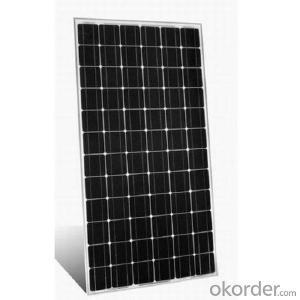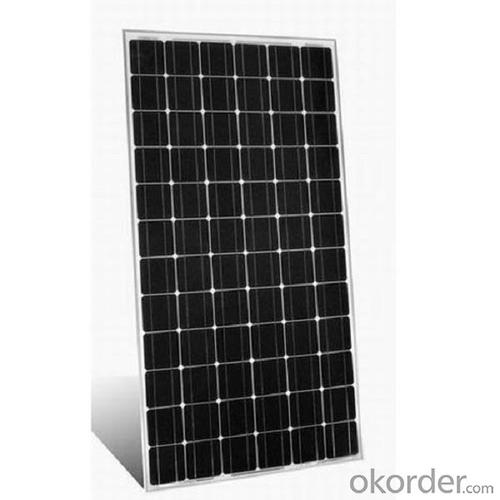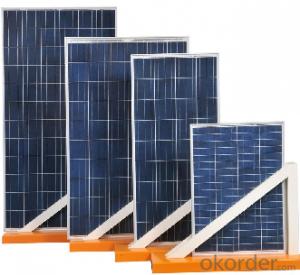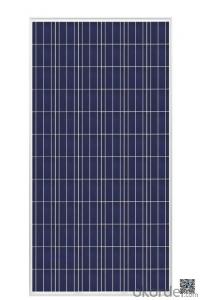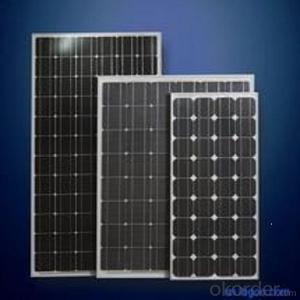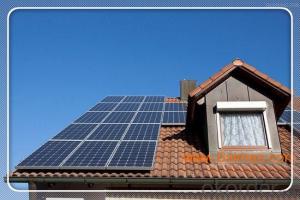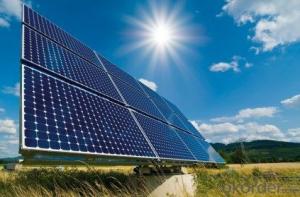Washington State Solar Panels:Solar Panels, Solar Panel, Solar Module Panel with Good Price
- Loading Port:
- Shanghai
- Payment Terms:
- TT OR LC
- Min Order Qty:
- 2500 watt
- Supply Capability:
- 26000 watt/month
OKorder Service Pledge
OKorder Financial Service
You Might Also Like
Specification
We now provide
• Monocrystalline Solar Panel
• Polycrystalline Solar Panel( multicrystalline silicon Solar Panel)
Features of our products:
• High conversion efficiency mono/poly-crystalline amorphous silicon solar cells
• Modules incorporate high performance bypass diodes to minimize the power drop caused by shading
• High transmittance, low-iron tempered glass
• High performance EVA encapsulant to prevent destroying and water.
• AI frame: without screw, corner connection. 8 holes on the frame can be installed easily
• Good performance of preventing from atrocious weather such as wind and hails
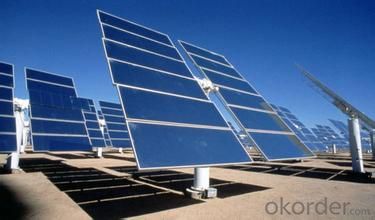
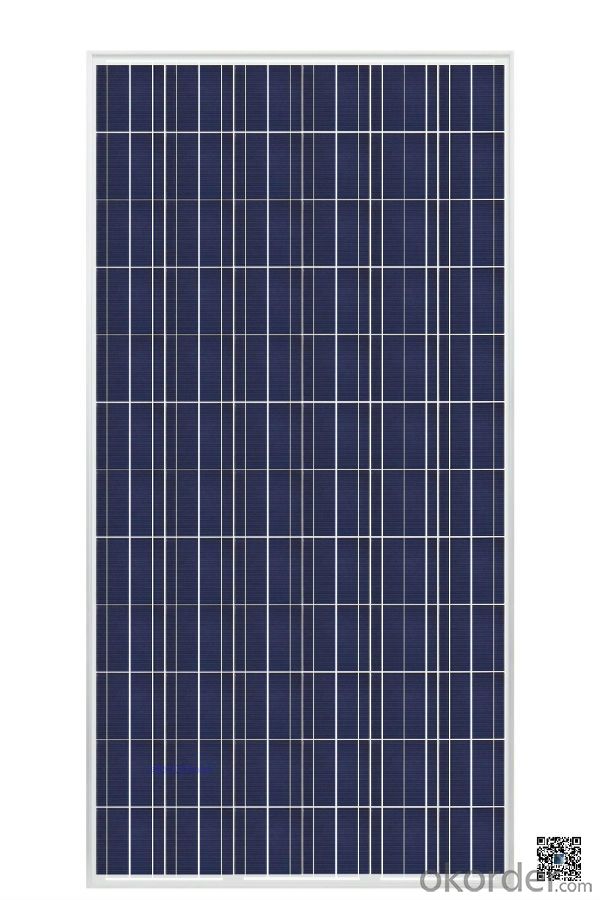

Polycrystalline Silicon Solar Modules 48Cell-195W Specification
ELECTRICAL PERFORMANCE | |||
Power output | P max | W | 195 |
Power output tolerances | ΔP max | W | 0/+5 |
Module effi ciency | η m | % | 14.7 |
Voltage at Pmax | V mpp | V | 23.7 |
Current at Pmax | I mpp | A | 8.03 |
Open-circuit voltage | V oc | V | 30.1 |
Short-circuit current | I sc | A | 8.65 |
Product Description:
This installation Manual contains essential information for the electrical and mechanical installation that your must know before installing CUSTOMER PV modules. This also contains safety information you need to be familiar with .All the information described in this manual are the intellectual property of CNBM and based on the technologies and experiences that have been acquired and accumulated in the long history of CUSTOMER. This document does not constitute a warranty, expressed or implied.
CUSTOMER does not assume responsibility and expressly disclaims liability for loss, damage, or expense arising out of in anyway connected with installation, operation, use or maintenance of the PV modules. No responsibility is assumed by CUSTOMER for any infringement of patents or other rights of third parties that may result from use of PV module.
CUSTOMER reserves the right to make changes to the product, specifications or installation manual without prior notice.
Solar Module Specification
Quality and Safety
1.Rigorous quality control meeting the highest international standards
2.High-transmissivity low-iron tempered glass, strong aluminium frame
3.Using UV-resistant silicon
4.ISO 9001:2008 and ISO 14001:2004
5.IEC61215, IEC61730, Safety Class in conformity to CE
- Q: I'm curious to know if the small solar panels on a calculator (ie TI-32) could produce a voltage similar to what is used in a single-use (disposable) camera, approximately 4V.
- Build okorder /
- Q: We want make solar panel for our home use. but we have no any right idea how we can make it. we want to make it with cheap prices.we also want to know the proper size of solar panel.where we can take help about making a solar panel
- How to Make a Solar Panel – Everything You are Going to Need There are several things you’re going to need when making a homemade solar panel, some of the main components include: Solar Cells Wood Plate Soldering Iron Solder Tabbing Don’t worry; special tools are not required for this DIY ‘solar panel’ project, and you will probably have everything you need laying around the garage. Now let’s go over the recommended materials for a basic solar system: Plexiglas Solar Cells Screws Lumber Jones Plug Wire Diode Caulk Silicon Material
- Q: Can solar panels be used off-grid?
- Yes, solar panels can be used off-grid. Off-grid solar panels generate electricity from the sun and store it in batteries, allowing them to provide power in remote or isolated locations without relying on a traditional electrical grid.
- Q: are solar panels just a photodiode?A Photodiode converts light into either current or voltage? Right?
- Yes, so are camera sensors. Except in cameras they're specially desgined to reduce noise.
- Q: Can solar panels be installed on bridges or highways?
- Yes, solar panels can be installed on bridges or highways. In fact, there are several projects around the world where solar panels have been installed on bridges and highway infrastructure. These installations not only generate clean energy but also utilize underutilized spaces, contributing to sustainable and efficient use of resources.
- Q: Does San Francisco get enough sunshine to really make solar panels a viable option for creating a self-supporting home? Certainly a wind turbine would be a good source of energy, but what about solar panels? Does S.F. get enough sunshine to justify using solar panels? It's overcast a lot in the Bay Area, are there any solar panels better than others for a climate like this?
- PV Solar panels all work the same. There aren't any climate specific ones. There is enough sun in San Francisco to produce energy using solar panels however, the the same panels located in a sunnier area will produce more energy. Depending on the size of your system, you will probably need a few more panels than an area that receives more sun to produce the same amount of energy. But they will still produce energy, even on overcast days. The solar installers will make all the calculations to determine what size system you will need to produce as much energy as you want. In California, you don't want to produce more than you consume in a 2 month period because currently, you are not able to sell your excess credits back to PGE after your 2 month cycle. Your system will cost more to produce the same amount of power than my system because I have less overcast days than you do. You will have to make the decision if the cost is worth your while. I expect my system to be totally paid for in around 8-9 years, working in the cost of inflation for electricity. After that, I will be paying nothing for electricty for as long as I stay in my house.
- Q: Can solar panels be used in areas with high levels of shade or obstruction?
- Solar panels can still be used in areas with high levels of shade or obstruction, but their efficiency and power generation may be significantly reduced. Shadows or obstructions can cause partial or complete shading on the panels, which can lead to a decrease in energy production. However, advancements in technology, such as the use of microinverters or power optimizers, can help mitigate the impact of shading by allowing each panel to work independently and optimize energy production. Additionally, proper placement and angle adjustments of the panels can also help maximize sunlight absorption, even in shaded areas.
- Q: How long does it take to install solar panels?
- The installation time for solar panels can vary depending on several factors such as the size of the system, complexity of the installation, and the availability of the necessary equipment and manpower. On average, a residential solar panel installation can take anywhere from one to three days. However, larger commercial installations may take longer, potentially a few weeks or more. It is best to consult with a professional solar installer who can provide a more accurate estimate based on your specific project requirements.
- Q: hey so im doing this project for my technology class and i was wondering what different colours solar panels can be. also is it possible to have kentic power as a back up power if batteries dont work? thx in advance
- I have only seen solar panels in a dark blue because of the material they are made of. Now the case can be any color I guess but aluminum (silver) seems to be common.
- Q: How do solar panels affect the roof's structural integrity?
- Solar panels do not typically affect the roof's structural integrity. Properly installed solar panels distribute the weight evenly across the roof and are designed to be lightweight. In fact, they can even offer some protection to the roof by shielding it from the elements. However, it is important to have a professional assess the roof's condition before installation to ensure it can support the added weight.
Send your message to us
Washington State Solar Panels:Solar Panels, Solar Panel, Solar Module Panel with Good Price
- Loading Port:
- Shanghai
- Payment Terms:
- TT OR LC
- Min Order Qty:
- 2500 watt
- Supply Capability:
- 26000 watt/month
OKorder Service Pledge
OKorder Financial Service
Similar products
Hot products
Hot Searches
Related keywords
